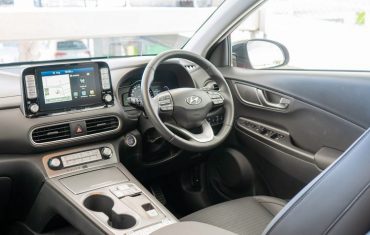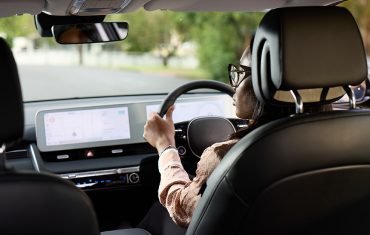
It’s time to confront a harsh reality: incidents of catastrophic bushfires, damaging winds, and devastating floods – once referred to as ‘once in a generation’ weather events – are now here to stay.
In 2024, a Senate Select Committee on the Impact of Climate Risk on Insurance Premiums and Availability heard from a number of leading climate change scientists and insurance experts. In their report, the Committee included the following statement from Andrew Minack from the National Emergency Management Agency (NEMA):
“It is accepted science that the frequency, intensity and complexity of storms, floods, fires, tropical cyclones and heatwaves are accelerating due to climate change and threatening the wellbeing and security of communities across our nation. National scale crises are becoming annual occurrences.”
Given the scientific likelihood of extreme weather events being experienced more regularly, it’s time to consider how much you know about safe driving in floods, strong winds, and bushfires.
FLOODS
There’s really only one tip for driving in floodwaters: don’t do it!
As opposed to completing a water crossing in a 4WD – which is a completely different kettle of fish, and something that those kinds of vehicles are designed (within certain limits, of course) to do – driving through floodwaters carries too many easily avoidable risks, the least of which is the likelihood of irreparable damage to your car. In the worst-case scenario, you and your passengers could drown.
Always plan ahead by checking the road conditions before you set out. If a road you want to use is under water, use an alternative route, even if the flood waters don’t look deep.

Researchers at the United Nations Office for Disaster Risk Reduction (UNDRR) found that as little as 15 centimetres of water for cars and 45 centimetres for 4WDs can cause a car to leave the road and float. Add to that the strong currents often associated with floodwater, and you’ve got yourself a serious situation in the blink of an eye.
UNDRR researchers also discovered that drivers often feel compelled to drive into floodwaters for a number of reasons, including time pressures, wanting to get back to check on their homes, their families, and pets, or feeling pressured by their passengers or other road users to drive through flooded areas. In this context, we’ve summarised some expert steps you can follow to decide whether flooded roads are safe – or not – to drive through.

- Assess the depth. Understanding the depth of the water is the most important step. If the water over the road is flowing, or is above the centre of your wheels, or if you can’t walk through it safely, then don’t drive through it.
- Turn off your air-conditioner. Turn off your aircon and electric cooling fan. This will prevent water from being drawn into the car.
- Use your lights. Turn on your hazard or fog lights so other motorists can see you.
- Drive very slowly and cautiously. Based on what’s been outlined above, if you must drive through floodwaters, maintain a steady speed of between 3 to 6 km/h. Use a low gear to maintain momentum and avoid sudden braking or acceleration. Stick to the centre of the road and let oncoming vehicles finish their crossing before you move on.
- Dry your brakes. As you leave the water, dry your brakes with slow, light taps on the brake pedal.
- Don’t panic. Flash flooding can happen at any time, so if your car suddenly gets stuck, use your legs to push open the doors, or break the window with a heavy, blunt object if necessary.
STRONG WINDS
Strong winds can also make driving very difficult. The impacts of winds are at their worst on exposed stretches of roads and when you pass high-sided vehicles like caravans and campers, or trucks carting shipping containers, curtain-siders, or refrigerated boxes. Wind gusts can be at their strongest when passing taller buildings in built-up areas, so it pays to be switched on no matter whether you’re in the city or in the bush.
As with all hazardous driving conditions, the number one tip for negotiating dangerous winds is to slow down. The faster you travel, the easier it is for wind gusts to affect the handling of your vehicle. Not only will driving too fast for the conditions make steering trickier due to understeer, it’s also going to make it harder to stop safely if you need to go for the anchors to avoid an accident.
There’s no defined number for by how many kilometers per hour you should drop your speed. Ease off as much as your comfort level needs you to, keep a safe distance from the vehicle in front of you, and, perhaps above all, be patient.
Planning ahead is an important part of driving safely in windy conditions. Check the weather conditions on your route and local news bulletins for road closure information, and make sure you have a plan B of alternative routes to deal with emergency road closures from accidents, fallen trees, or excessive debris on the roads. Avoid bridges if you can, and don’t park under trees or near high buildings during a windstorm.

Furthermore, driving experts recommend these really simple tips for driving safely in high winds:
- Keep two hands on the wheel. Gusty winds vary in speed and can ‘grab’ your vehicle at any second. Having a good, comfortable grip on the steering wheel with both hands will make it easier to maintain control if you’re caught off-guard by your vehicle being hit by a sudden gust of wind.
- Avoid overtaking. Unless it’s absolutely safe (and necessary) to do so, try not to overtake vehicles in dangerous winds. Overtaking in these conditions is extremely dangerous because sudden gusts of winds when you’re passing a truck or caravan/camper can impact your own vehicle’s handling and your control over your vehicle.
- Give motorbikes and cyclists extra room. This follows on from avoiding overtaking in heavy winds. These types of road users get blown around really easily in strong winds, so leaving extra room between them and your vehicle minimises the chance of a collision or injury.
- Don’t tow. Many experts agree that towing high-sided trailers – like caravans and horse floats – with your car or 4WD in dangerous winds is a definite no-no. Because they’re highly susceptible to strong wind gusts, they increase the chances of an incident and can make the roads unsafe for other drivers.
BUSHFIRES
Being caught in a bushfire is terrifying, to say the least. In recent years, bushfires have taken a devastating toll on communities all around Australia. The notion of ‘bushfire season’ needs to be acknowledged as a thing of the past too – just ask the residents of California who lost everything in catastrophic fires that occurred in the middle of their winter.

The most important part of staying safe while driving in bushfire conditions is to follow – to the letter – the advice and instructions of your emergency services. There is no negotiating. Leave when you’re told to. Ignoring their advice puts your life, and the lives of others, at serious and avoidable risk.
Bushfires are predictable in their unpredictability, so preparedness is essential. While every Australian state and territory’s fire services have a wealth of resources on how to be bushfire ready, it’s still essential to know what to do if you find yourself in a bushfire emergency:
- Stay calm. It’s human to panic, but do your best to switch back on mentally as soon as you can. Assess the situation: Which direction is the wind coming from? Can you see the fire? Is it safer to stay where you are? Being anxious only leads to bad decision-making that can put you in even greater danger. Tune your radio to the emergency broadcaster in the area or check emergency service websites for more advice if you have mobile phone reception.
- Know when it’s unsafe to keep driving. If visibility is less than around 100 metres, you can see the flames, or you can see wildlife beating a hasty retreat, it’s time to turn around. If you can keep driving, drive at a safe speed with your headlights, driving lights, and hazard lights on to increase your visibility through the smoke for other drivers. Give yourself enough time to react to hazards on the road.
- Find a safe area to stop. If you decide your safest course of action is to pull over, avoid parking around trees or tall grass. Find a clearing or, if possible, a rocky outcrop or wall of some kind. Bitumen or concrete car parking areas are also good choices. Just don’t park on the road itself. Phone 000 and advise them of your exact location.
- Shelter in your vehicle. The Victorian CFA recommends you take the following steps if you find yourself in the path of an oncoming blaze. Park your car facing the oncoming fire front and turn your engine and aircon off. Tightly close all windows and doors, and shut all your vehicle’s vents. Cover yourself with woollen blankets to protect you from the effects of radiant heat and get down below window level. Drink plenty of water to stay hydrated.
With extreme weather events becoming more frequent, driving safely through floodwaters, strong winds, and bushfires requires a mix of preparation, patience, and staying informed. By adhering to the tips provided here, you stand a much better chance of protecting yourself, your passengers, and your motor vehicle.
Stay informed. Stay prepared. Stay safe.
Start a conversation with SG Fleet about safe driving today.
 Driving Insights
Driving Insights




